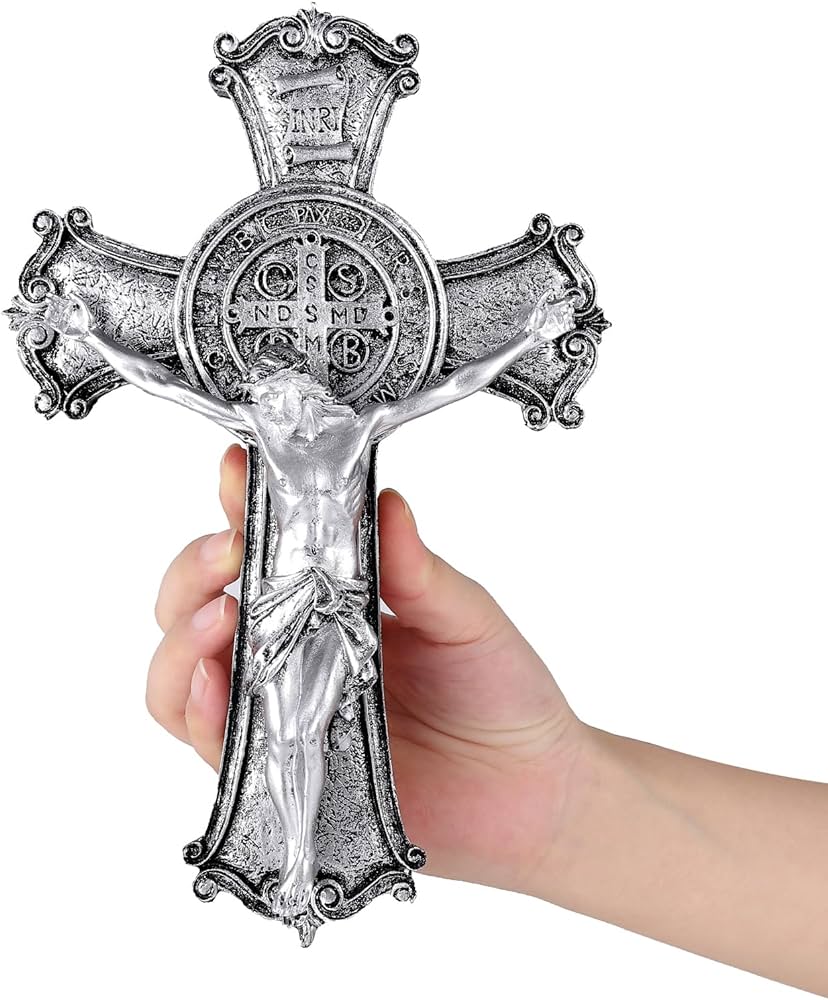The cross, Star of David, Om symbol, crescent moon and star, lotus flower, menorah, Buddha Eyes, Ankh, Dharma Wheel, and star and crescent are all important religious symbols that hold deep significance in Christianity, Judaism, Hinduism, Islam, Buddhism, and other faiths. Each symbol carries unique meanings and represents different aspects of spiritual beliefs and practices. Understanding the symbolism behind these religious symbols can provide insight into the beliefs and traditions of various religious traditions and the ways in which individuals express and connect with their faith.
1. Cross
The cross is a significant symbol in Christianity, representing the crucifixion of Jesus Christ and his sacrifice for the salvation of humanity. It is a symbol of hope, love, and forgiveness for Christians around the world. The cross can be found in various forms, including the Latin cross, Greek cross, and Celtic cross, each with its own unique design and meaning.
2. Star of David
The Star of David, also known as the Shield of David, is a prominent symbol in Judaism. It is composed of two interlocking triangles, representing the connection between God and humanity. The six points of the star symbolize the six days of creation and the center represents the Sabbath, a day of rest and reflection.
3. Om Symbol
In Hinduism, the Om symbol is considered to be the most sacred sound and a representation of the divine. It is often chanted during meditation and prayers and is believed to encompass the essence of the universe. The symbol is composed of three curves, a semicircle, and a dot, each representing a different aspect of the divine.
4. Crescent Moon and Star
The crescent moon and star symbol is associated with Islam and is featured prominently on the flags of many Muslim countries. The crescent moon represents the Islamic lunar calendar, while the star is a symbol of guidance and divine light. Together, they represent the faith and unity of the Muslim community.
5. Lotus Flower
In Buddhism, the lotus flower is a powerful symbol of purity, enlightenment, and the journey to spiritual awakening. The lotus grows in muddy waters but blooms into a beautiful and pure flower, symbolizing the potential for spiritual growth and transformation within all individuals.
6. Menorah
The menorah is a seven-branched candelabrum that is a symbol of the Jewish faith and is often displayed during the celebration of Hanukkah. Each of the seven candles represents a different day of the week, with the center candle, known as the shamash, used to light the other candles, symbolizing the spreading of light and hope.
7. Buddha Eyes
The Buddha Eyes, also known as Wisdom Eyes, are a symbol of wisdom and enlightenment in Buddhism. They are commonly depicted on stupas and shrines, representing the all-seeing nature of the Buddha and the ability to see beyond the physical world into the realm of enlightenment.
8. Ankh
The Ankh is an ancient Egyptian symbol representing life and immortality. It is often depicted as a cross with a loop at the top, symbolizing the key of life and the afterlife. The Ankh was associated with the goddess Isis and is still used as a symbol of protection and good luck in modern times.
9. Dharma Wheel
The Dharma Wheel, also known as the Dharmachakra, is a symbol of the teachings of Buddhism and the path to enlightenment. The wheel is divided into eight spokes, representing the Noble Eightfold Path and the stages of spiritual development that lead to the end of suffering.
10. Star and Crescent
In addition to the crescent moon and star, the combination of the star and crescent is also used as a symbol in various faiths, including Islam and the Baha’i faith. The star and crescent have been associated with divine guidance, protection, and the cycles of the moon, representing the interconnectedness of the spiritual and physical worlds.
